Some of the 17 coins are incredibly rare, and they may be worth more than $124,000.
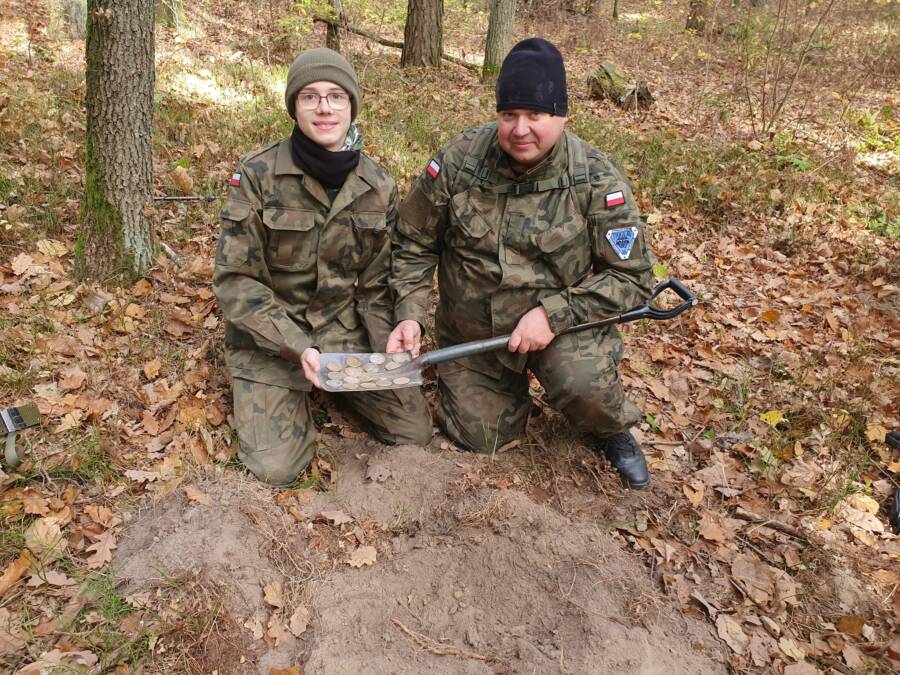
Polskie Stowarzyszenie Poszukiwaczy “Husaria”/FacebookFather and son Sławomir and Szymon Milewski, who uncovered the coin hoard near Pomiechówek, Poland.
When the Polish Treasure Hunters Association “Husaria” and the Triglav Historical and Research Association set out to search a forest north of Warsaw on Nov. 3, 2024, they hoped to locate a Roman-era trade route. Instead, two members of the group — who happened to be father and son — stumbled upon an incredible hoard of coins from the 16th and 17th centuries.
The cache is not only one of the largest ever found in Poland, but it also contains a number of coins so rare that they’ve hardly ever been seen before.
How A Father And Son Discovered The Coin Hoard Near Pomiechówek
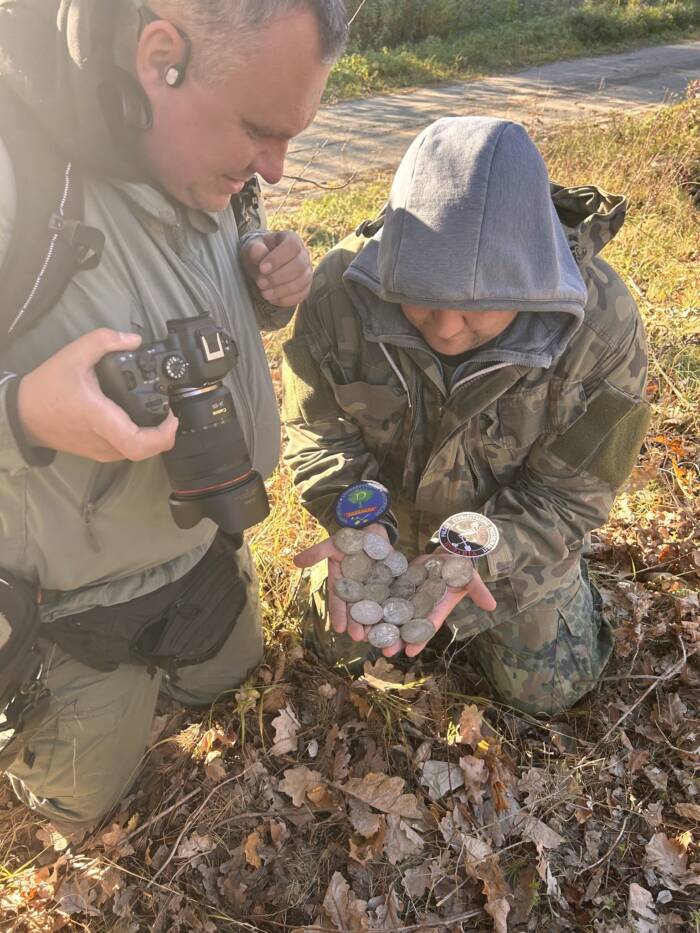
Polskie Stowarzyszenie Poszukiwaczy “Husaria”/FacebookThe coin hoard, dubbed “treasure,” was found entirely by accident.
According to a Facebook post from the Polish Treasure Hunters Association “Husaria”, the coin hoard found in Pomiechówek was an unexpected discovery.
“We supposed to search for a road from the times of the Roman Empire… and came out a TREASURE of coins,” the group wrote on Facebook, adding: “This is probably the biggest discovered treasure in Mazovia.”
The hoard was found by Sławomir Milewski and and his son Szymon, who had been invited to join the search, in a shallow hole about five to 10 centimeters deep.
“At first, there was a great noise, because everyone who participated in the search — and there were a dozen of us, came running at the call of the discoverers and we all realized that we had discovered something incredible,” Mateusz Sygacz of the Polish Treasure Hunters Association told All That’s Interesting in an email.
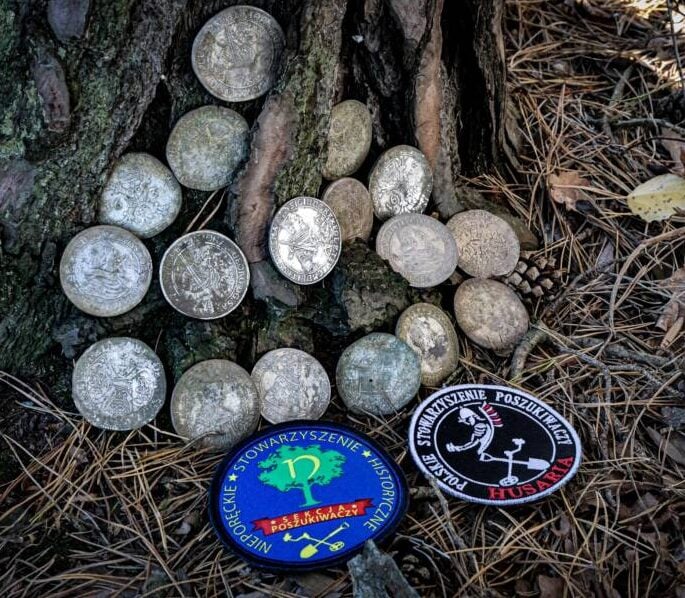
Polskie Stowarzyszenie Poszukiwaczy “Husaria”/FacebookSome of the coins displayed at the base of a tree alongside the badges of the groups that uncovered them.
The hoard contained 17 coins from a variety of places including the District of Tyrol, the Spanish Netherlands, Prussia, the Duchy of Palatinate-Zweibrücken, Austria, and Saxony. Many are extremely valuable. The 1630 Sigismund III Vasa thaler coin, for example, is similar to one that sold last year for $24,500.
All in all, the coin hoard is valued at 500,000 zł, or around $124,000.
“We were rubbing our eyes in disbelief,” Piotr Duda, an archaeologist with the Triglav Historical and Research Association, exclaimed to Polish media. “This is probably one of the largest finds of its kind ever discovered in Poland, and certainly in Mazovia. The historical significance is beyond measure, and its estimated material value is half a million złotys.”
So, how in the world did the coins end up in a Polish forest?
Who Did The Pomiechówek Coin Hoard Belong To?
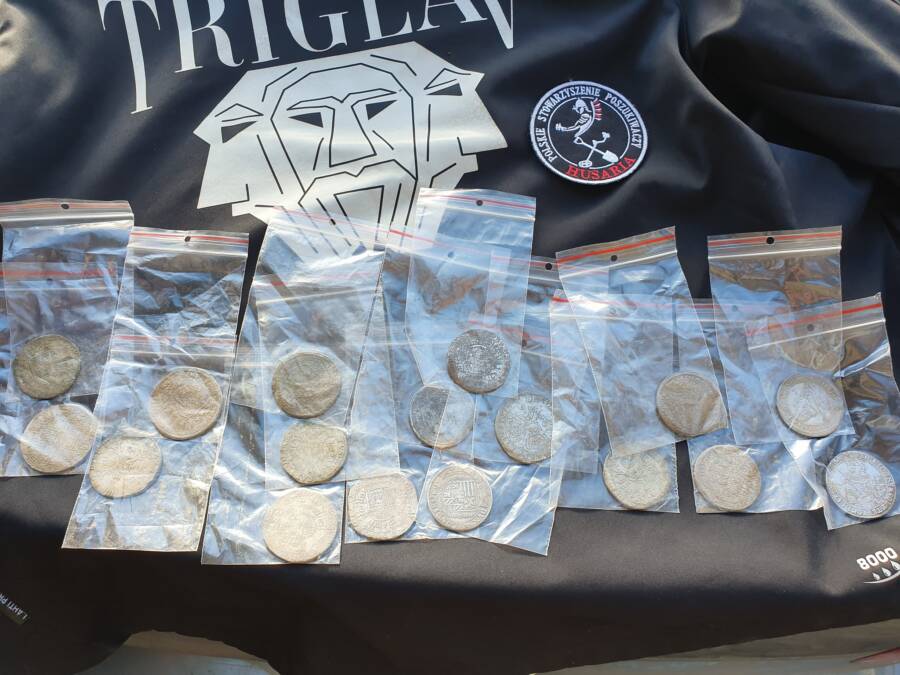
Polskie Stowarzyszenie Poszukiwaczy “Husaria”/FacebookThe coins were carefully collected from the woods near Pomiechówek, northwest of Warsaw, and they will be handed over to the Masovian Provincial Conservator of Monuments.
Coin hoards often have a tragic backstory, whether they were hidden because of pirates or tucked away during a war. And the coins found in Pomiechówek are likely no exception.
Experts suspect that the Pomiechówek coin hoard was buried during a time of hostility, possibly the Thirty Years’ War (1618 to 1648) or Swedish-Polish conflicts in the mid-17th century. Pomiechówek is indeed located near the site of a 1655 battle between Swedish and Polish troops. And both sides used mercenaries, which could explain the array of coins from different countries.
“We suspect that one of the soldiers lost his pay,” Sygacz told All That’s Interesting, adding: “Another assumption is that the burial was made by a merchant who wanted to hide his property from potential robbers — there was an inn about a kilometer away from the 16th century, and we know from earlier discoveries of similar deposits that it was a common practice to hide valuables before visiting an inn. Why ‘someone’ did not return their property, we will probably never know…”
Wherever the coins came from, the next task is to figure out where they’ll go.
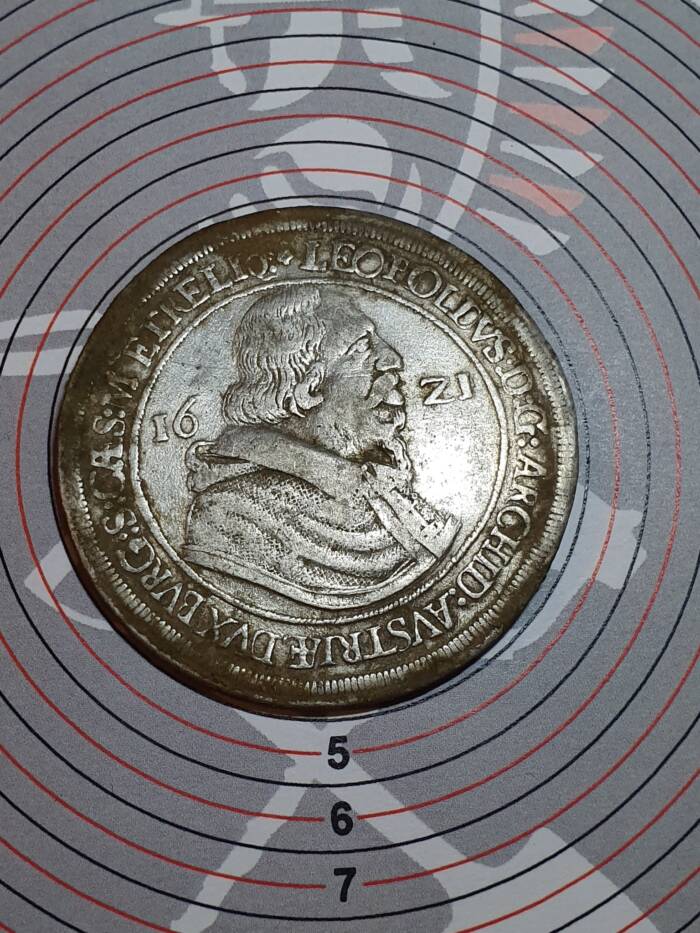
Polskie Stowarzyszenie Poszukiwaczy “Husaria”/FacebookA close-up of one of the extremely rare coins found in Poland.
“The discovered treasure will be officially handed over to Masovian Voivodeship Conservator of Monuments on Nov. 12,” the Polish Treasure Hunters Association wrote on Facebook, “And [that] will begin the procedure of selecting a museum unit, which will ensure the preservation of uncovered coins and guarantee their exposition.”
As such, the story of the Pomiechówek coin hoard is not quite over. It stands as a remarkable, surprising discovery, the wonder of which is encapsulated by the Polish Treasure Hunters Association’s original Facebook post: “WE HAVE A TREASURE!”
After reading about the coin hoard in Poland uncovered by a father and son, discover the story of the Defenestration of Prague, the window-tossing scandal that helped start the Thirty Years’ War. Or, learn about the Winged Hussars, the fierce Polish troops who wore wings on their backs.





